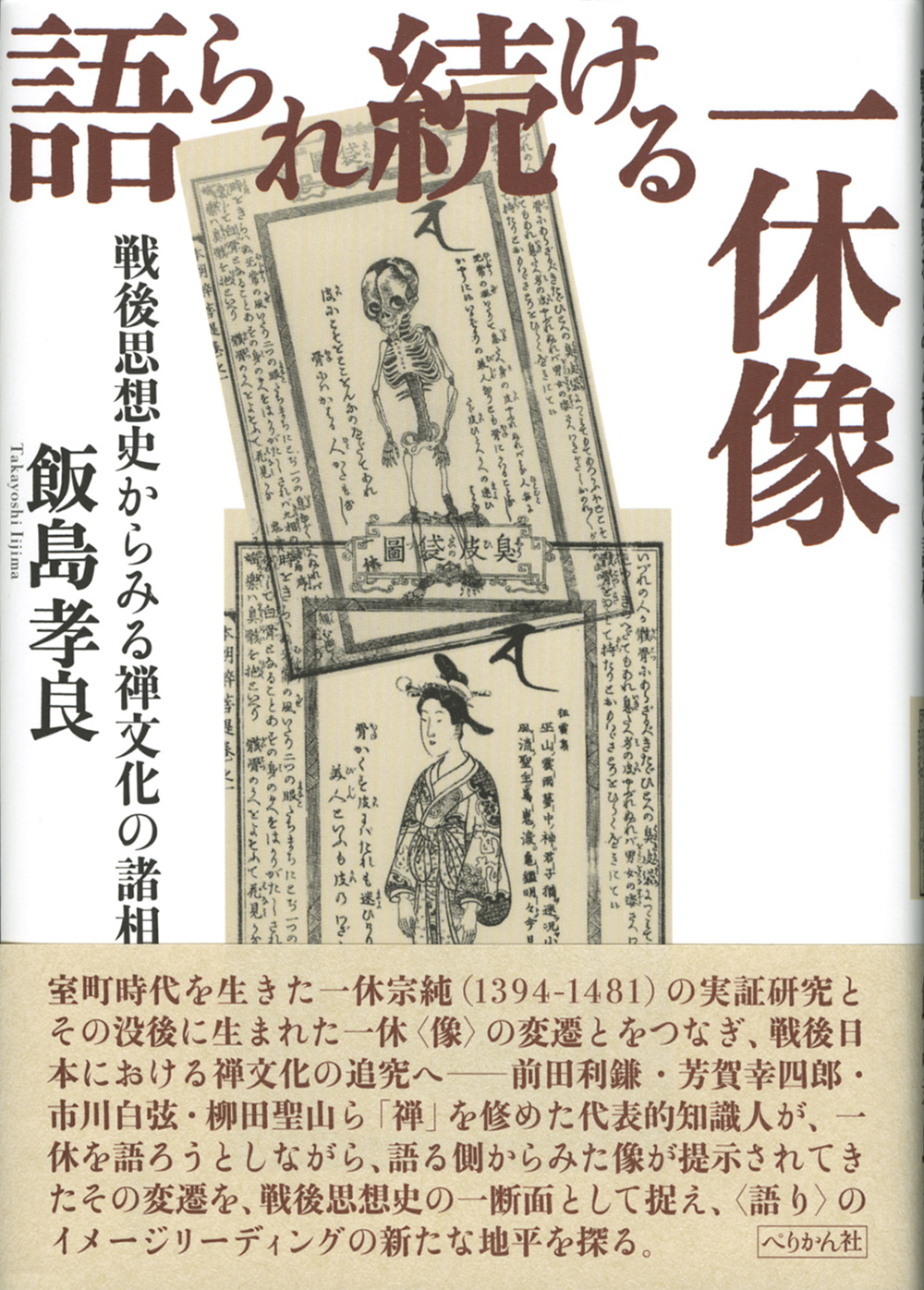
Title
Katararetsuzukeru Ikkyu-zo (Ikkyū Being Narrated - Aspects of Zen Culture as Seen from the History of Postwar Thought)
Size
384 pages, A5 format
Language
Japanese
Released
July, 2021
ISBN
978-4-8315-1594-0
Published by
Perikansha Publishing Inc.
Book Info
See Book Availability at Library
Japanese Page
There may not be another Zen monk who is as well known to the Japanese as Ikkyū Sōjun (1394–1481), who lived in the latter part of the medieval period. In spite of this—or perhaps because of this—there are probably few people about whom it is so difficult to gain a grasp of the true facts. Up until my high school years, I too did not think that he had been anything more than a “quick-witted, cheeky little monk.”
This impression changed completely during the summer holidays in my first year at university. I had been travelling around by myself, and the final place I visited was Shūon’an, also known as Ikkyū-ji Temple, in Kyōtanabe city, Kyoto prefecture. There I encountered a wooden statue and a portrait of Ikkyū. Standing in front of his fierce countenance, even I, who had little knowledge of him, felt as if his glare were piercing me to the quick. As I left, I purchased at the temple stall a tanzaku, or strip of card, inscribed with the words “Who would speak of Zen in the presence of Crazy Cloud?” as a souvenir. It was evident even to a callow youth like myself who had only just turned twenty that these words and self-perception as “Crazy Cloud” were an expression of enormous confidence that could even be described as arrogance. But what did this “Crazy Cloud” mean, which seemed to be quite unrelated to that “quick-witted, cheeky little monk”?
Upon my return to Tokyo, I immediately set about researching Ikkyū. On perusing his Crazy Cloud Anthology and Self-Admonition Anthology, both collections of Sinitic poems, I found them described with complete candour the figure of an “eccentric” who repeatedly violated the monastic precepts and frequented brothels. But I also realized that it would require enormous time and effort in order to understand the words of Ikkyū, who had fashioned difficult Zen terms into poems. In order to learn about Ikkyū as a Zen monk, one would naturally need some knowledge of Zen studies. In order to understand the historical background of Kyoto, Sakai, and Ōmi where Ikkyū had lived, it would be necessary to delve into the history of the medieval period. And an approach from Sinitic literature would also be required in the case of Ikkyū, who had expressed himself through the medium of Sinitic poetry. The path towards an understanding of Ikkyū was demanding and steep.
In spite of being such a demanding figure, there are an enormous number of anecdotes and legends associated with Ikkyū. A quick-witted monk, a defiant and eccentric monk who did not observe the precepts, and the teacher of Murata Shukō, the founder of the tea ceremony, not to mention the difficulties entailed in understanding his Crazy Cloud Anthology and Self-Admonition Anthology—the image of Ikkyū in later times has continued to be expressed in a great variety of media. Many of the episodes about him would seem to be folk tales, but even if they are, is it right to simply dispose of them as groundless myths?
While thinking about this, I was struck by a certain fact. I was not the only person to have been fascinated by Ikkyū, and from the Muromachi period down to today countless people have been captivated by him and have talked about him. Why is it that Ikkyū, demanding and difficult, has inveigled himself to such an extent into the minds of the Japanese? Why is it that he has never been forgotten, even if details of his life and career are not known? Could this not be rather a question relating to the cultural and intellectual history of the Japanese? Might it not be possible to clarify the vicissitudes of a particular “Zen culture” by pursuing the question of why and how Ikkyū has been discussed down through the ages? This is the issue addressed in this book.
In this book, I take up the task of combining evidential research on Ikkyū Sōjun, who lived in the Muromachi period, with changes in the images of Ikkyū that have continuously emerged since his death and examining inquiries into Zen culture in postwar Japan. Furthermore, retracing the discourse of intellectuals such as Maeda Togama, Haga Kōshirō, and Ichikawa Hakugen, I understand changes in the presentation of images of Ikkyū in terms of postwar Zen thought and probe the unexplored horizons of deciphering the images of Ikkyū in such discourse. In the introductory chapter, I endeavour to describe one development in Zen culture by tracing changes in the image of Ikkyū. The postwar intellectuals taken up in chapters 1–4 are fine examples of people who sought to shed light on themselves and on their times through Ikkyū and Zen in the fields of philosophy, literature, history, the history of thought, Zen studies, and so on. The addendum brings together notes on my attempts to decipher both Ikkyū’s writings in the Crazy Cloud Anthology and the Record of Linji, an important background factor in his writings. I hope that through this book, combined with these textual analyses, the reader will be able to savour at least to some extent just how multistratified and how much like a polyhedron discourse about Ikkyū and Zen culture has become.
(Written by: IIJIMA Takayoshi / March 28, 2022)
Related Info
The 1st UTokyo Jiritsu Award for Early Career Academics (The University of Tokyo 2020)
https://www.u-tokyo.ac.jp/ja/research/systems-data/n03_kankojosei.html
2022 Award for Outstanding Scholarship (Japanese Association for Religious Studies 2022)
https://jpars.org/english/prize/award



